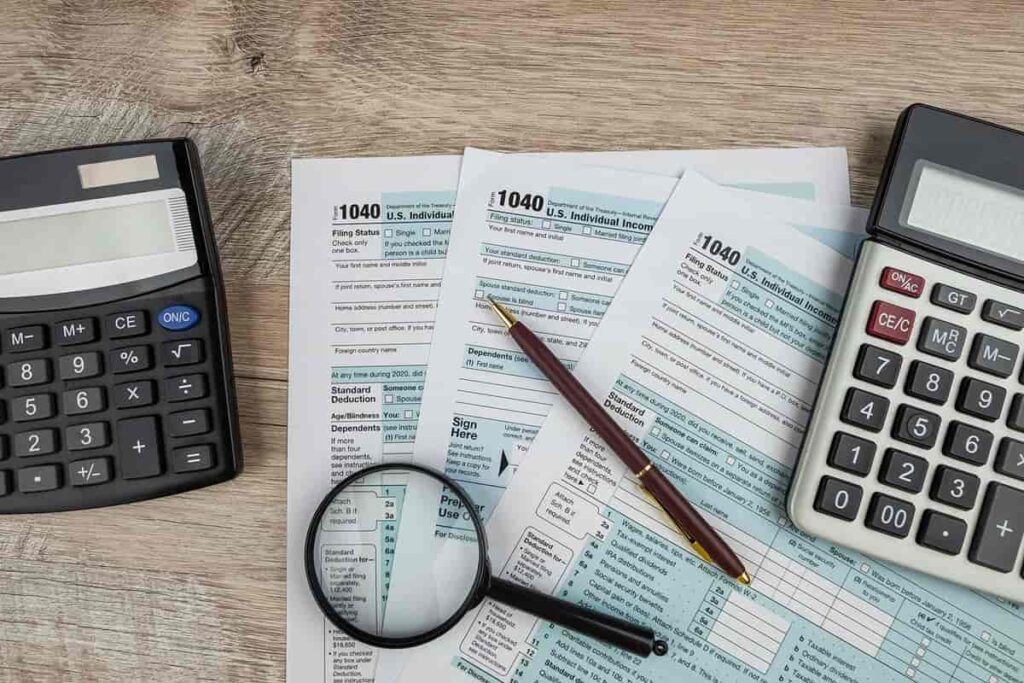Why Are Popular SPACs Falling Down?
Table of contents

We often research what today’s investor is looking for and then get in front of it with an article. This usually starts with software tools that tell us what people are searching for. You can do this yourself by simply opening up Google and typing a phrase. In the below example, we’re asking Google to show us what questions people are asking about special purpose acquisition companies or SPACs.

If you wanted to create a compelling article title, you could take several of these phrases and combine them. For example:
- Why are SPACs popular?
- + Why are SPACs down?
- + Why are SPACs falling?
- = Why are popular SPACs falling down?
Now that we’ve put together the perfect article title, we need to answer the question – why are popular SPACs falling down?
Why Popular SPACs Are Falling Down
If you know anything about meme stocks, you’ll know that today’s retail investor doesn’t know their ass from a hole in the ground. The stupidity on display is mind boggling. It’s like ICOs except worse, because now it’s a transfer of money from “people who can’t afford to lose it” to “people who have too much of it.” Crafty algorithms living at hedge funds like Renaissance are cleaning house, and it largely has to do with inflated valuations.
It’s a Valuation Problem
Generally speaking, a popular SPAC has a large following of people taking financial advice from memes being posted on StockTwits and using phrases like “diamond hands.” If a popular SPAC is falling, it’s almost certain that shares were overpriced based on irrational exuberance. Allow us to explain.
We used to assume that $10 a share for a SPAC was a fair price because it was the same price institutional investors paid. That was a wrong assumption, and our investing methodology is being updated to reflect that. A study last year by Stanford and NYU revealed “by the time the median SPAC merges with a target, it holds just $6.67 in cash for each outstanding share.” How many investors buying SPACs today are paying $6.67 per share? None of the 47 SPACs we’ve covered even come close. Most SPACs trade well above the $10 per share the merger is announced at. That’s if the merger even takes place. Many investors assume that once the merger is announced, the deal is bound to happen. After all, have you ever seen a SPAC deal fall through?
It’s a Deal Problem
Cracks are starting to show on a few deals, notably two space SPACs – Momentus and Astra. Apparently, there weren’t enough votes for the Astra/Holicity merger the day it was expected to be formally approved. That glossy SPAC deck dog-and-pony show they do is simply announcing that the merger has been approved by both boards, but shareholders need to vote on it first – or some variation thereof. Every SPAC is same same, but different. In the case of Momentus, most of the shareholders were retail investors who have better things to do than cast shareholder votes. (Has any retail investor actually done this through snail mail?) We even saw ads on Yahoo Finance recently from a SPAC asking their shareholders to vote. One can only imagine how costly it must be to broadcast banner ads on Yahoo Finance to the retail investor masses in hopes of reaching the tiny fraction who invested in your SPAC. That ad spend is probably coming out of that $6.67 per share.
As we get closer to when the SPAC music will stop, we should not buy any SPAC until the deal has formally closed. Why? Because, if the average SPAC holds just $6.67 in cash for each outstanding share, that means shareholders will get absolutely punished if the deal doesn’t go through. Here’s the simple math using the current share price of both SPACs where the deal seems to be faltering:
- Momentus / Stable Road Acquisition Corp. (SRAC)
($14.25 – $6.67) / $14.25 = -53% - Astra / Holicity (HOL)
($12.83 – $6.67) / $12.83 = -48%
If either deal falls through, those shares will only be worth the cash they represent – whether it’s more or less than $6.67. We can be certain that these shares don’t represent more than $10 in cash, so any SPAC deal that busts will quickly reflect its true value – somewhere under $10 per share. Because every deal is its own complex beast, you can’t take a one-size-fits-all approach to valuing SPACs, especially ones that don’t successfully complete a merger.
It’s a Trust Problem
Your memorandum of understanding (MOU) with FedEx for an order of 60,000 electric trucks when you deliver them six years from now and $6 won’t get you a packet of fags at most American convenience stores. Unless it is contractually obligated that money be paid for a good or service, it hasn’t been sold. The recent deluge of electric vehicle SPACs was so overwhelming that we had to stop warning people about them otherwise we wouldn’t get anything else done. At least one of these SPACs is starting to unravel. Lordstown Motors (RIDE) inexplicably trades at $10.40 per share after reversing their claim about binding orders and warning investors they may go out of business. The real value of those shares should be zero, because without your reputation intact, you’re worth nothing. If a popular SPAC is having reputational issues, you better lose those diamond hands.
It’s Another Valuation Problem
One other thing we learned is that even after a SPAC merger is complete, you can still end up paying way too much for future growth. In other words, the price it trades at today – even if it’s around that magical $10 mark – is still way overvalued.
Desktop Metal is a good example. After calculating our simple valuation ratio across our entire tech stock catalog (at least for the loves and the likes), Desktop Metal came out on top in a bad way. While we consider stocks with a valuation ratio over 40 to be excessively rich, Desktop Metal sits at 100. (Fortunately, we trimmed our DM position when the stock doubled in a matter of days, and covered more than half our cost basis.) Now, we need to take a holistic look at the other 3D printing stocks emerging on the scene – like Velo3D and Markforged – then decide which we ought to be holding by examining their individual SEC filings. Since it’s doubtful all of them have already filed proper documents, it’s just a waiting game for now. It makes you wonder how many SPAC owners are holding the bag and haven’t realized it yet (cough, Quantumscape, cough).
A List of Popular SPACs
If your popular SPAC is getting crushed, you may assume that all popular SPACs are getting crushed. It’s a tricky assumption for several reasons. Firstly, SPACs of a feather will indeed flock together when it comes to returns. It’s expected that 3D printing SPACs would be somewhat correlated in much the same way electric vehicle SPACs probably are. But when we consider the entire universe of SPACs, it becomes trickier. That’s because all of them will be in various states of maturity. Some will have just announced the intent to merge in Q3-2022, provided the stars and moon are in alignment, while others will already be way post-merger where their birth from a SPAC has all been forgotten.
If you need a list of SPACs to compare, you’ve come to the right place. [Puts sales hat on.] Our tech stock catalog contains more than 300 tech stocks we’ve covered along with a few lines of commentary and links to more exhaustive research. Around 47 of these stocks are popular SPACs, and they might be just what you need to run some regression analysis on.

[Takes sales hat off.]
Conclusion
Popular SPACs are falling down because they weren’t fairly valued to begin with. That guy they call “the SPAC King” said he wants to “democratize access to investing opportunities,” and more recently quipped that “nobody listens to Warren Buffet anymore.” On one of those counts he’s right. Most of the investors buying popular SPACs today probably think The Oracle of Omaha is some new cannabis strain. You may not know exactly why your popular SPAC is falling, but you’re probably better off listening to Warren Buffet who said recently that SPACs are “gambling with other people’s money.” And gamblers always lose in the long run.
Sign up to our newsletter to get more of our great research delivered straight to your inbox!
Nanalyze Weekly includes useful insights written by our team of underpaid MBAs, research on new disruptive technology stocks flying under the radar, and summaries of our recent research. Always 100% free.















Very relevant article!!! It leads me to the question regarding the SPACs that you are holding in your tech portfolio. For example, at a current valuation ratio of 100, why would one hold on to a stock like DM?
Cheers for that Ami! Why would we hold DM at a current valuation ratio of 100? Question is, why did we buy it at that valuation ratio? Well, that’s because we only recently decided on our simple valuation rule and that a hard cutoff should be 40. At the time we bought DM, the thought didn’t even cross our mind.
Our DM thesis hasn’t changed. We still like their aspirations, though some have raised criticisms of the company that have caught our eye. We’re certainly not adding to the position. As for moving out of the position in favor of some more fairly priced candidate, that will take some additional research. We move slowly on decisions like this, so stay tuned. Good question!
Thanks guys! I will certainly stay tuned. I was wondering if there should also be thought about placing bottom range sell limits. This would obviously be a decision for each individual to make, but something to think about. Right now it appears to be in a technical base formation. It will be interesting to see how the fundamentals collaborate with it, not to mention, the overall market sentiment.
Setting sell limits based on some arbitrary price target then puts us in speculator territory. This shows why it’s critically important to buy a stock with conviction. After the fact, realizing that the asset we’re holding is overpriced, puts us in an awkward position. Overall market sentiment seems to be holding DM up. We nudged our research team to follow up on this sooner than later. Cheers for sharing some good thoughts Ami!
Hate SPACS also but wondering what you think of Symbolic a factory automation company based in Wilmington Massachusetts funded by Walmart and Softbank with actual significant sales. Company to merge with a SPAC.
We’ll add it to our queue Robert! Thanks for the heads up.